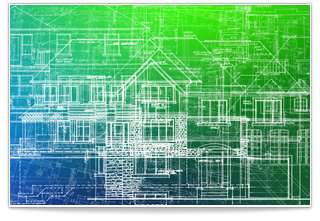In order to protect your firm, contractual provisions such as disclaimers and other exculpatory language need to be carefully worded. Firms should assess the risk of project-specific provisions and work with local legal counsel to craft them appropriately. This is especially true when the provisions include any waiver of claims, requirements for a legal defense, or the indemnification of costs.

Firms may find themselves facing an increased level of claims related to sustainable design. As the standard of care evolves, clients will expect a higher level of services. As the value of green design increases because of the financial benefits tied to sustainable design, clients will demand contractual assurances. As the measurement of performance increases, clients will look more closely at the difference between design requirements and actual use of energy, water and other operational expenses.
Avoiding language or actions that could be construed to establish a warranty of service or results is essential. Including contractual provisions that are clear on the role of the design firm is critical. Establishing reasonable expectations at the beginning and throughout the project is vital. One way to avoid unreasonable contractual provisions or unrealistic expectations is by educating the client to understand that design services are recommendations that the client has to understand and, once satisfied, accept. The following are two examples of communication tools that lead to a client’s “informed consent.”
Mutual understanding on designing for sustainability and certification
Example #1—When the owner wants the design to meet specific sustainability criteria
The Owner has made the Design Firm aware that the Owner wants a specific level of sustainability incorporated into the Project and that the Design Firm shall use the standards published by (SPECIFY DESIGN GUIDELINES OR CERTIFICATION STANDARD) for this Project. The Design Firm shall research the applicable sustainability requirements and design the Project with the intention of having the Project meet the requirements. The Owner recognizes that a project designed to meet a specific sustainability standard might not perform as designed because of the construction, operation and maintenance of the Project and therefore agrees that it shall bring no claim against the Design Firm if the project does not perform as intended unless the negligence of the Design Firm is the sole cause of the performance deficiency.
The Owner also recognizes that during the design of the Project, the Design Firm shall use professional judgment in the selection of materials, products and systems for the Project but that the Design Firm cannot and does not warrant the performance of any specified material, product or system. The Design Firm will identify for the Owner any material, product or system that, in the Design Firm’s judgment from the Design Firm’s examination of available performance information, might provide the Owner with a benefit on this Project but does not have adequate information on its performance in actual construction or operation. The Owner acknowledges that it shall look solely to the manufacturer, supplier or installer of materials, products or systems if their performance does not meet expectations.
Example #2—When the Owner Wants Third-Party Certification of Sustainability
The Owner has made the Design Firm aware that the Owner intends to pursue (SPECIFY CERTIFICATION STANDARD) for this Project. The Design Firm shall research the applicable certification requirements, design the Project with the intention of having the Project to meet the requirements, and document the design of the Project for submission by the Owner to the certifying organization. The Owner recognizes that certification is not based on design alone but also on the construction, operation and maintenance of the Project and therefore agrees that it shall bring no claim against the Design Firm if the project is not certified as intended unless the negligence of the Design Firm is the sole cause of the Project not being certified.
The Owner also recognizes that during the design of the Project, the Design Firm shall use professional judgment in the selection of materials, products and systems for the Project with the goal of meeting certification criteria but that the Design Firm cannot and does not warrant the performance of any specified material, product or system. The Design Firm will identify for Owner any material, product or system that, in the Design Firm’s judgment from the Design Firm’s examination of available performance information, might provide the Owner with a benefit on this Project but does not have adequate information on its performance in actual construction or operation. The Owner acknowledges that it shall look solely to the manufacturer, supplier or installer of materials, products or systems if their performance does not meet expectations.
Sustainable design & the future
The need for sustainable design will continue. Ensuring reasonable contractual provisions and realistic client expectations are paramount. Evaluating how your firm fits into this ever-changing equation will be an important step to help ensure your firm’s continued success and growth in the future.
Victor and CNA work with the AIA Trust to offer AIA members quality risk management coverage through the AIA Trust Professional Liability Insurance Program and Business Owners Program to address the challenges that architects face today and in the future.